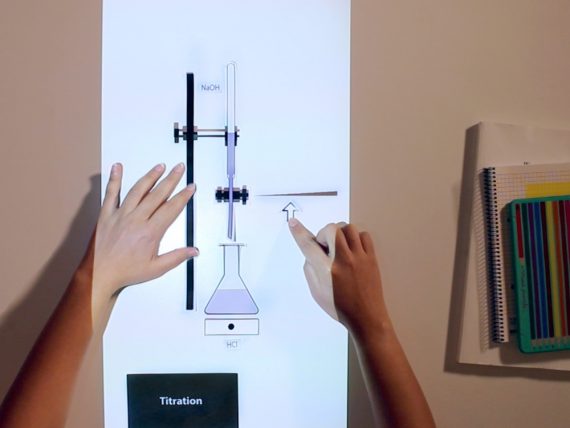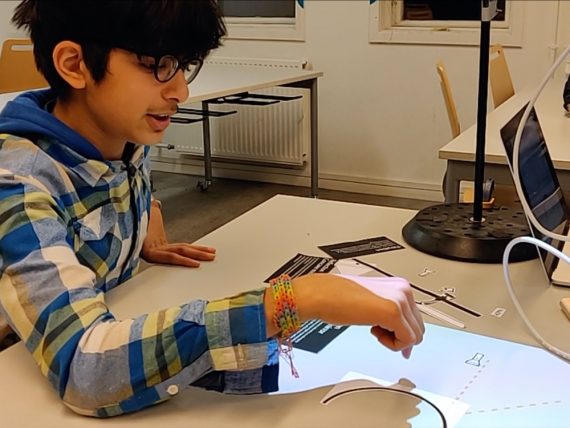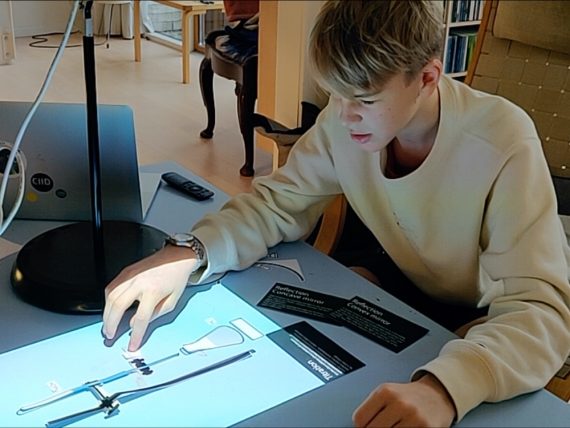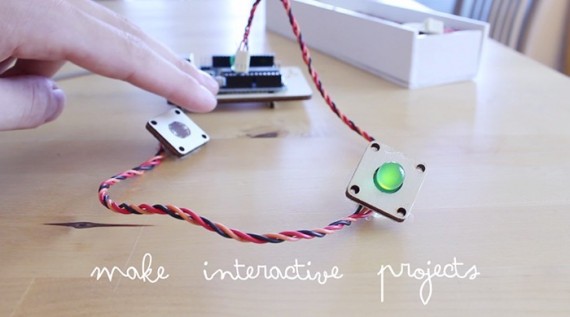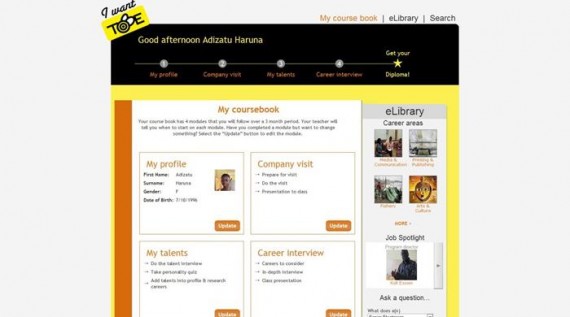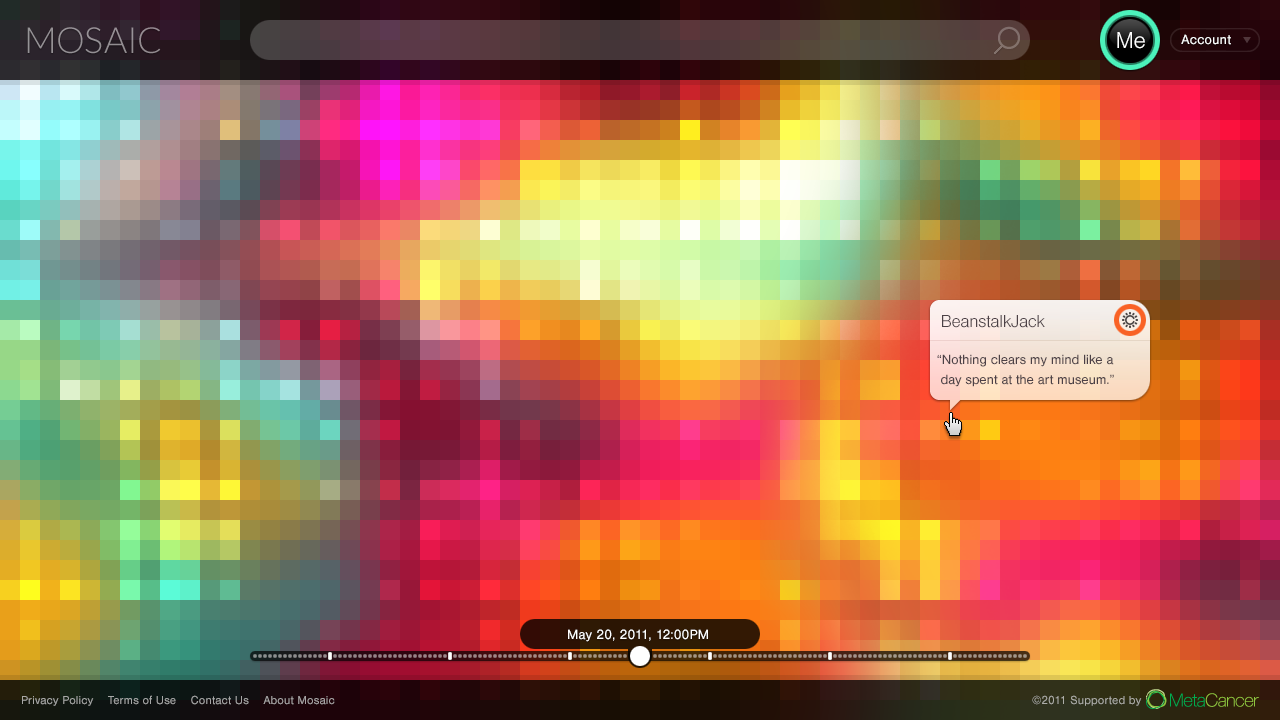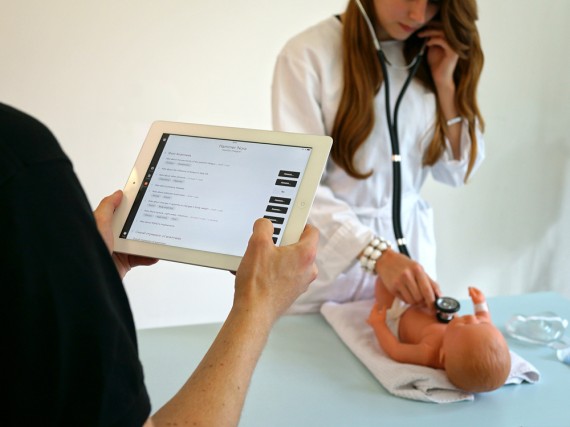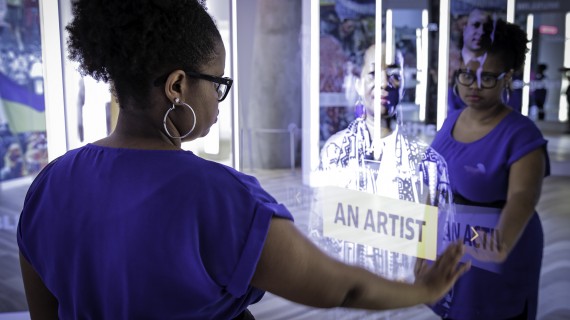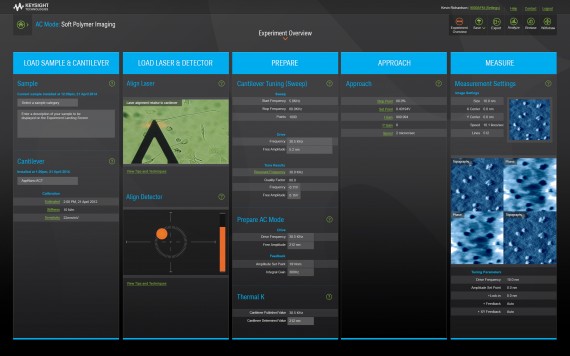The Smart Learning Lamp
Team
Company | Institution
Category
Type
Project description
Middle school education can be very challenging for students. They get introduced to a lot of new mathematical and scientific concepts that are often abstract in nature and difficult to understand. The current education system is designed as a one size fits all solution, with a set way to teach and learn these concepts. This approach contrasts with facilitation and letting learning happen organically. What if these concepts could be made more fun and tangible? Would this help the students gain more confidence in learning these concepts, let them explore the subject matter more deeply, and help them develop their own reasoning behind them? The “Smart Lamp” addresses this opportunity space by creating a mixed-reality environment that brings together the advantages of both physical and virtual environments.
Context
The primary target group is the middle school students. These are early teenagers who are wired to learn from their experiences. Research shows that they have a more photographic memory compared to adults and remember visuals better than text or words. Most of them are early adopters of new mobile and gaming technologies which reduces their attention spans and as a consequence they seek instant gratification. This implies that they can get up the learning curve quickly and pick-up new concepts really easily if they are allowed to play with them.
Research also showed that a lot of parents are themselves not confident about these STEM concepts and as a result they find themselves inept to help the students. The solution also seeks to address this need of parents by providing them a teaching tool that they can engage together with their children. It enables the teachers and the parents to explain a concept to the students in an easy way.
Impact
The co –creation sessions showed that the students were immediately engaged in the content because of the full-control on the simulation. An immediate understanding of subject matter was observed and it made the students want to explore, observe, build and break more concepts using the paper cut-outs and the projected environment.
The “Smart Lamp” also aims to address the United Nations Sustainable Development Goal #4 “Quality education”. It empowers the schools in developing countries which lack quality physical laboratory facilities and scientific teaching equipment by being an all-inclusive teaching tool. It also opens up an opportunity area where the students can borrow the lamp from school to engage in group study activities at home. They can carry out their laboratory experiments to build their understanding of STEM concepts using merely paper cut-outs and the “Smart Lamp’s” projected environment.
Craft
An In-depth research was carried out during which a number of educational videos, podcasts and research papers were studied. The research also involved interviews with students, teachers, parents, education experts, EdTech business owners and developmental psychologists.
Once the problem area was identified, various ideas were generated and prototypes were created. Which were refined over multiple co-creation activities that uncovered additional insights leading to the final solution.
Context
The primary target group is the middle school students. These are early teenagers who are wired to learn from their experiences. Research shows that they have a more photographic memory compared to adults and remember visuals better than text or words. Most of them are early adopters of new mobile and gaming technologies which reduces their attention spans and as a consequence they seek instant gratification. This implies that they can get up the learning curve quickly and pick-up new concepts really easily if they are allowed to play with them.
Research also showed that a lot of parents are themselves not confident about these STEM concepts and as a result they find themselves inept to help the students. The solution also seeks to address this need of parents by providing them a teaching tool that they can engage together with their children. It enables the teachers and the parents to explain a concept to the students in an easy way.
Impact
The co –creation sessions showed that the students were immediately engaged in the content because of the full-control on the simulation. An immediate understanding of subject matter was observed and it made the students want to explore, observe, build and break more concepts using the paper cut-outs and the projected environment.
The “Smart Lamp” also aims to address the United Nations Sustainable Development Goal #4 “Quality education”. It empowers the schools in developing countries which lack quality physical laboratory facilities and scientific teaching equipment by being an all-inclusive teaching tool. It also opens up an opportunity area where the students can borrow the lamp from school to engage in group study activities at home. They can carry out their laboratory experiments to build their understanding of STEM concepts using merely paper cut-outs and the “Smart Lamp’s” projected environment.
Craft
An In-depth research was carried out during which a number of educational videos, podcasts and research papers were studied. The research also involved interviews with students, teachers, parents, education experts, EdTech business owners and developmental psychologists.
Once the problem area was identified, various ideas were generated and prototypes were created. Which were refined over multiple co-creation activities that uncovered additional insights leading to the final solution.


